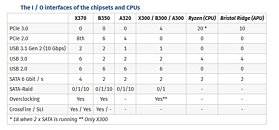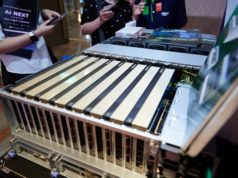Only AMD’s top-of-the-line X370 chipset will support competing NVIDIA’s SLI technology. AMD’s next-in-line B350 eschews SLI support but retains CrossFire compatibility, while the low-end A320 chipset will offer no support for any such multi-GPU technologies. While this may seem a move by AMD to purposely gimp NVIDIA products on its platforms, it stands to reason that even enthusiasts tend to stay away from multi-GPU solutions and their associated problems. Besides, AMD will surely avoid any way of giving NVIDIA more funds than the company already has, by way of paying the “SLI Tax” on every chipset it ships. By limiting SLI support to its highest-end chipsets, AMD shaves some expenses from licensing efforts, whilst keeping SLI support to those that are, in truth, more likely to use them: power users, who will certainly spare no expense in springing to a X370-based platform.
As of now, some details remain unclear in the overall feature-set and compatibility differences between AMD’s upcoming AM4 chipsets, but it would seem that only AMD’s X370 chipset manages to leverage the full 20 PCIe lanes (18x if you run 2x SATA connections) delivered by AMD’s Ryzen CPUs. This would look like a way for AMD to impose a “motherboard tax” on users, by limiting the number of PCIe lanes available on lower-end motherboards, and thus urging them to take the next step to their own X370. Apparently, PCIe lanes are not a differentiating factor between AMD chipsets (with X370, B350 and A320 all offering 4 native lanes), only their ability to access (or not) Ryzen’s own 20.
Not much time until all of this is adequately cleared up, though.
Source: Computerbase.de







